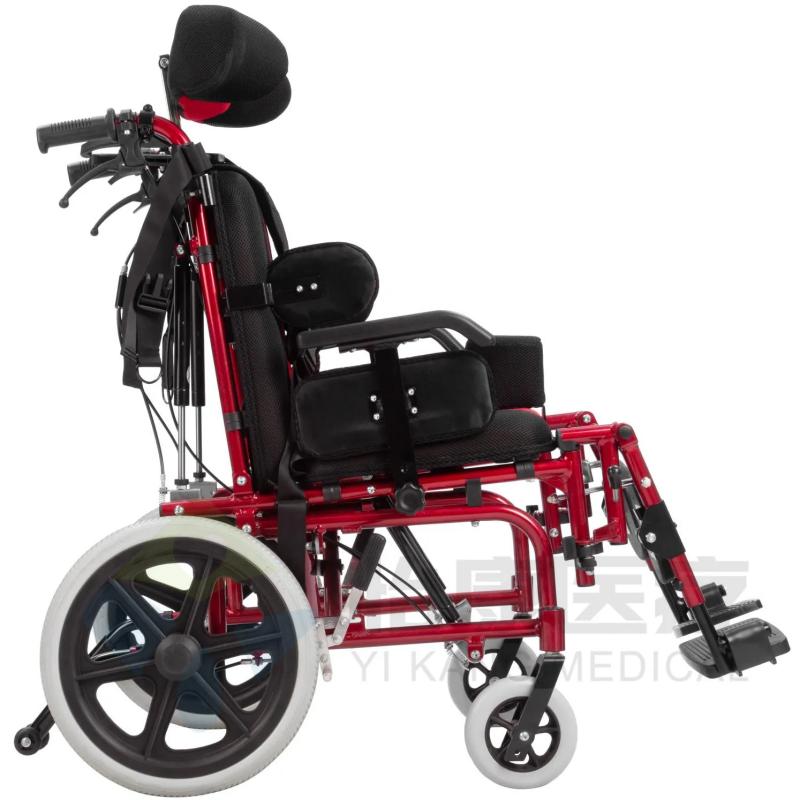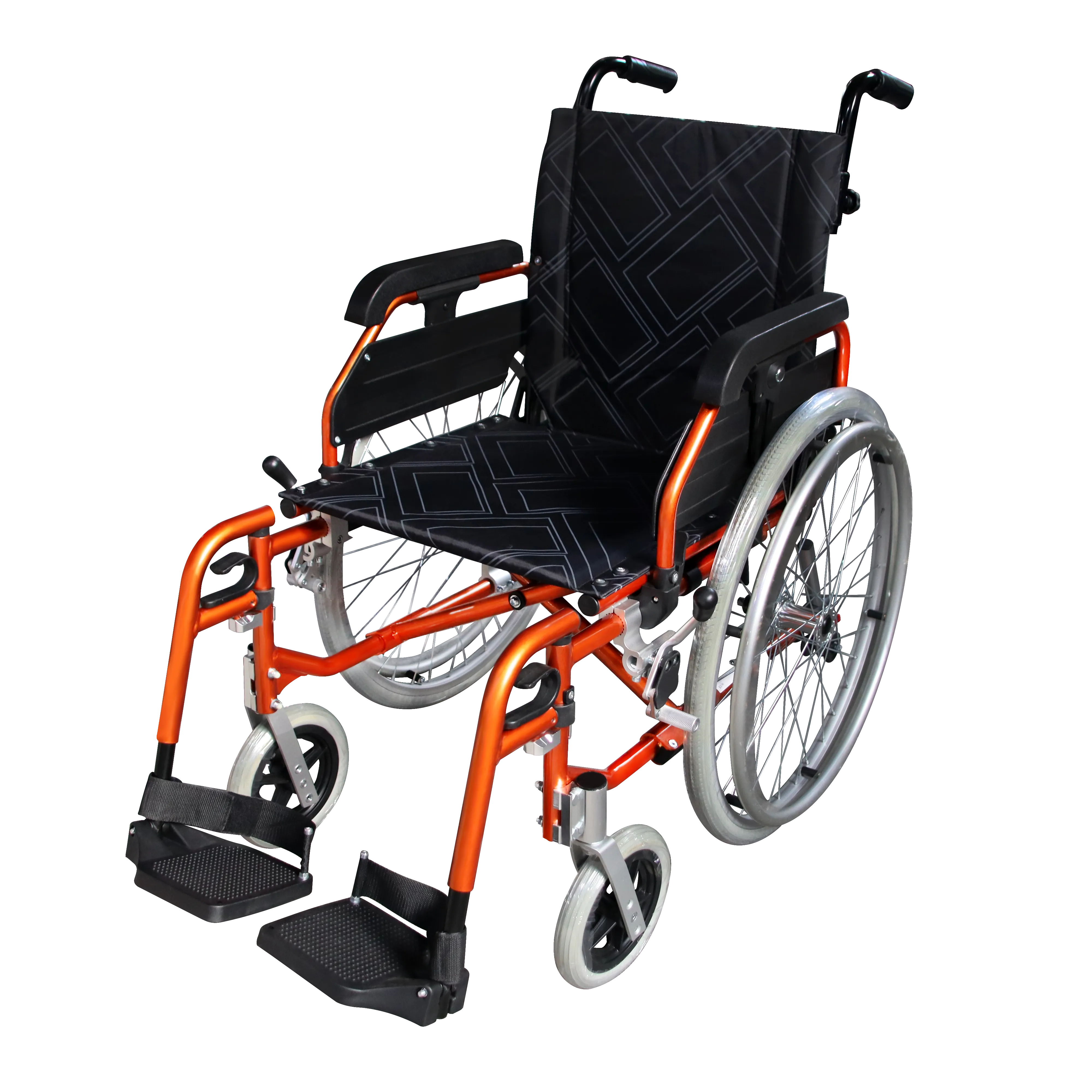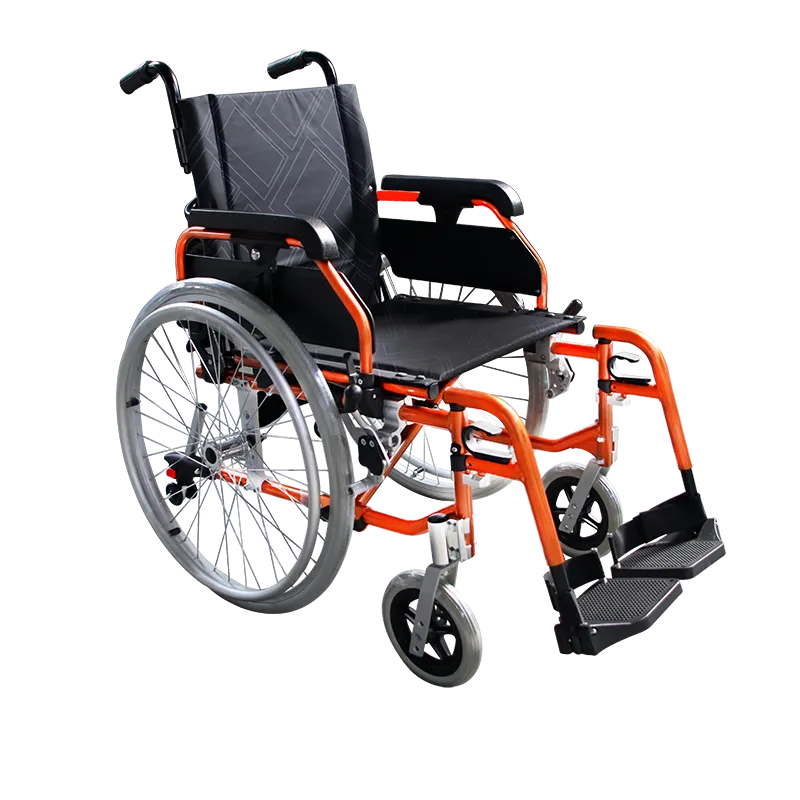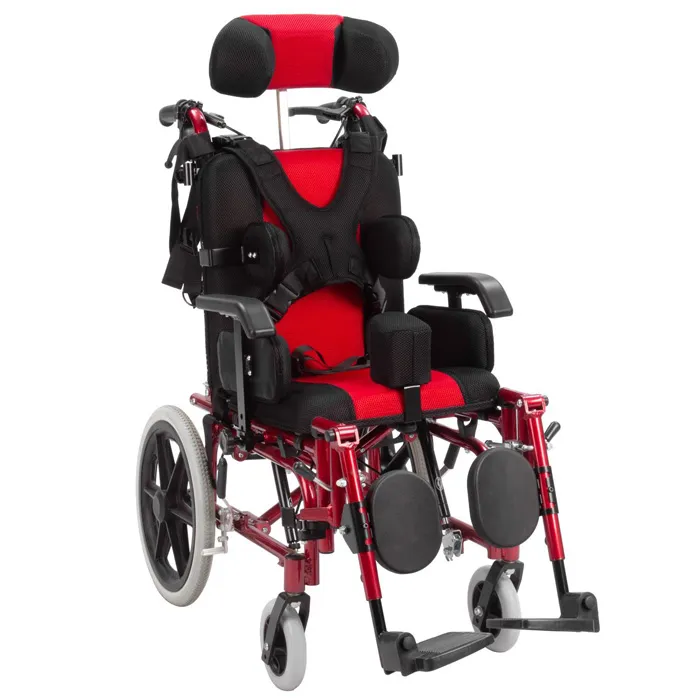In the field of medical assistive devices, wheelchairs, as an important auxiliary tool for people with mobility impairments, have been subdivided into multiple types according to the needs of different groups of people. In particular, "pediatric wheel chair" and "adult wheel chair", these two seemingly similar devices, actually have significant differences in design concepts, size parameters, support structures, functional configurations, etc.
This article will conduct a systematic, professional and detailed analysis around the question "What is the difference between a pediatric wheel chair and an adult wheel chair?" to help readers fully understand the differences between the two.

What is a pediatric wheel chair?
The pediatric wheel chair is an auxiliary mobile device designed for children, suitable for people with mobility impairments from infants to adolescents. The pediatric wheel chair not only meets basic mobility needs, but also takes into account the special needs of children's body size, bone development and psychological development during their growth.
What is an adult wheel chair?
The adult wheel chair is a wheelchair designed for adults or larger and heavier users. Adult wheel chairs are usually designed to support the weight of adults and provide a certain degree of comfort. Their structure and functions take into account the independence and durability required by adults in their daily lives.

What is the difference between a pediatric and an adult wheel chair?
There are significant differences in design and function between pediatric wheel chairs and adult wheel chairs. These differences stem from the differences in the body structure, activity needs, and comfort needs of the two types of users. The following will analyze in detail the main differences between the two wheelchairs in terms of size, structure, adjustability, safety, comfort, and functionality.
1. Size difference
There are significant differences in size between pediatric wheel chairs and adult wheel chairs. Children's height, body shape, and bone development are different from those of adults, so pediatric wheel chairs are usually designed to be more compact and adapted to children's body shapes. Specifically:
● Seat width: The seat width of pediatric wheel chairs is usually narrower to accommodate children's waist and hip sizes, while adult wheel chairs are designed to be wider to accommodate adults' body shapes.
● Seat height: The seat height of pediatric wheel chair is lower, which is more in line with the height ratio of children to ensure that they can sit in the wheelchair in the correct posture. The seat of adult wheel chair is usually higher to adapt to the sitting posture needs of adults.
● Wheel size: Due to the small size of children, the wheels of pediatric wheel chair are relatively small, which is convenient for children to operate flexibly in indoor and outdoor environments. Adult wheel chair is equipped with larger and stronger wheels, which is suitable for outdoor use and can cope with the challenges of different terrains.
2. Structure and weight difference
Adult wheel chair and pediatric wheel chair also differ in material selection and structural design. Pediatric wheel chair usually uses lighter materials so that parents can easily carry it, and it can also adapt to the needs of children in daily use. In contrast, the structural design of adult wheel chair is more stable and has a stronger load-bearing capacity, which is suitable for adults with heavier weight.
● Material: Adult wheel chair often uses stronger materials such as steel and aluminum alloy to ensure its durability and load-bearing capacity. The pediatric wheel chair uses more lightweight materials, such as aluminum alloy or plastic, to reduce weight, making the wheelchair easier to control and move.
● Weight: Due to the smaller size and strength of children, pediatric wheel chairs are generally lighter, weighing about 10 kg, which is convenient for parents to carry and carry. The weight of adult wheel chairs is usually more than 15 kg, and some electric adult wheel chairs may be heavier.
3. Differences in adjustability and adaptability
The pediatric wheel chair usually provides more adjustment options in terms of adjustability to adapt to children's growth and physical changes. As children's bones and muscles are constantly developing, the pediatric wheel chair needs to have a certain degree of adjustability to ensure that children always maintain a comfortable posture during use.
● Seat and back support: The pediatric wheel chair usually has more adjustable options and can be adjusted according to the child's size, height and sitting posture to ensure the best support for the back, spine and hips. The adult wheel chair mainly considers the size of adults and has a relatively small adjustment range.
● Armrests and footrests: The armrests and footrests of pediatric wheel chairs can usually be adjusted in height and angle to meet the needs of children of different ages. The armrests and footrests of adult wheel chairs are usually simpler to adjust, and can meet the basic needs of adults.

4. Differences in safety and comfort
Children's activity needs are different from those of adults, and pediatric wheel chairs usually pay more attention to details in terms of safety and comfort. When children use wheelchairs, they are more likely to have safety problems caused by improper sitting posture or unstable wheelchairs. Therefore, the design of pediatric wheel chairs will pay more attention to anti-overturning, fixed support and a variety of safety accessories.
● Safety accessories: pediatric wheel chairs are usually equipped with more sophisticated safety belts, support belts, side protection devices, etc. to prevent children from tipping over or falling when moving. Although adult wheel chairs also have some safety accessories, considering that adults are usually more stable, the safety design is not as complicated as that of pediatric wheel chairs.
● Comfort design: In order to adapt to the more active and flexible activities of children, the seat and backrest of the pediatric wheel chair are usually made of soft and breathable materials to ensure that it will not cause discomfort during long-term use. The comfort design of the adult wheel chair usually focuses on support and stability. The comfort may be more reflected in the reduction of fatigue after long-term use, rather than emphasizing activity and flexibility like the pediatric wheel chair.
5. Functional differences
Although the basic functions of the pediatric wheel chair and the adult wheel chair are to help users move, their functional designs are also different due to different user needs.
● Sports function: For some children, especially those who are keen on sports, the pediatric wheel chair may have more sports functions, such as more flexible wheel design, adjustable seat angle, etc., to help children get better support when doing sports. The adult wheel chair usually pays more attention to the comfort and functionality in daily life, such as the comfort when sitting for a long time.
● Electric function: Although electric wheelchairs are more common among adults, there are also some children with special needs, especially those with weak physical strength or limited mobility, who use electric pediatric wheel chairs. This type of wheelchair has an electric drive system to reduce children's physical exertion and help them move more easily.
6. Appearance and design
Appearance and design are also one of the important differences between pediatric wheel chairs and adult wheel chairs. Children's psychological development and aesthetic needs are different from those of adults, so pediatric wheel chairs are usually designed to be more vivid and interesting. By using bright colors, cartoon patterns, cute accessories and other elements, pediatric wheel chairs are more likely to be accepted and loved by children.
The adult wheel chair pays more attention to simple and practical design, and its appearance is mostly based on calm colors and simple lines, which is more suitable for the living environment and psychological needs of adults.

Does Yikang Medical offer low prices and promotions?
Absolutely! We understand that cost-effectiveness is a priority for many buyers. Yikang Medical provides competitive pricing on all our hospital furniture and rehabilitation products. We offer wholesale pricing, bulk purchase discounts, and periodic promotions to ensure that our customers can access high-quality products at affordable prices. Whether you're looking to buy a hospital bed, wheelchair, or any other medical equipment, our prices are designed to provide excellent value.

